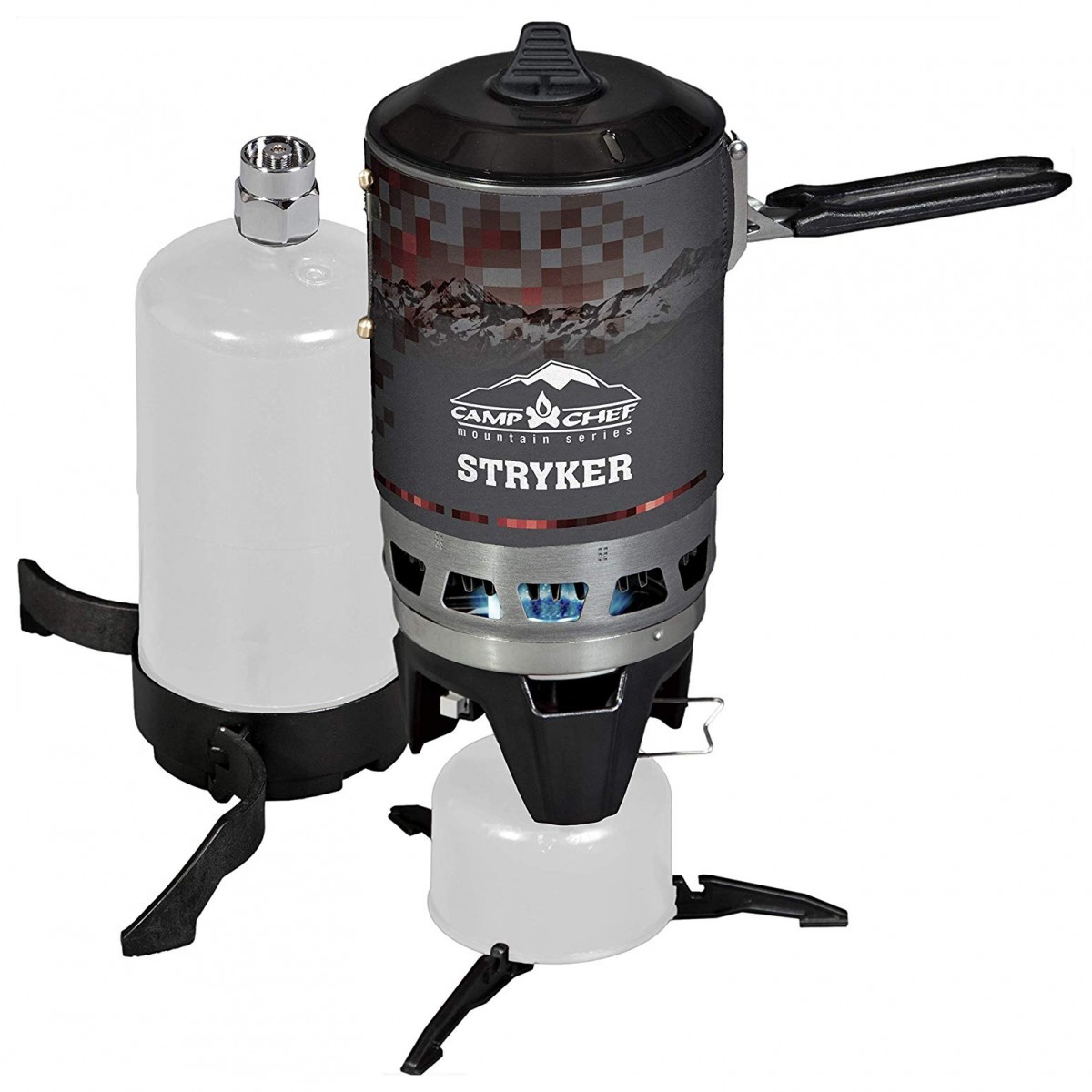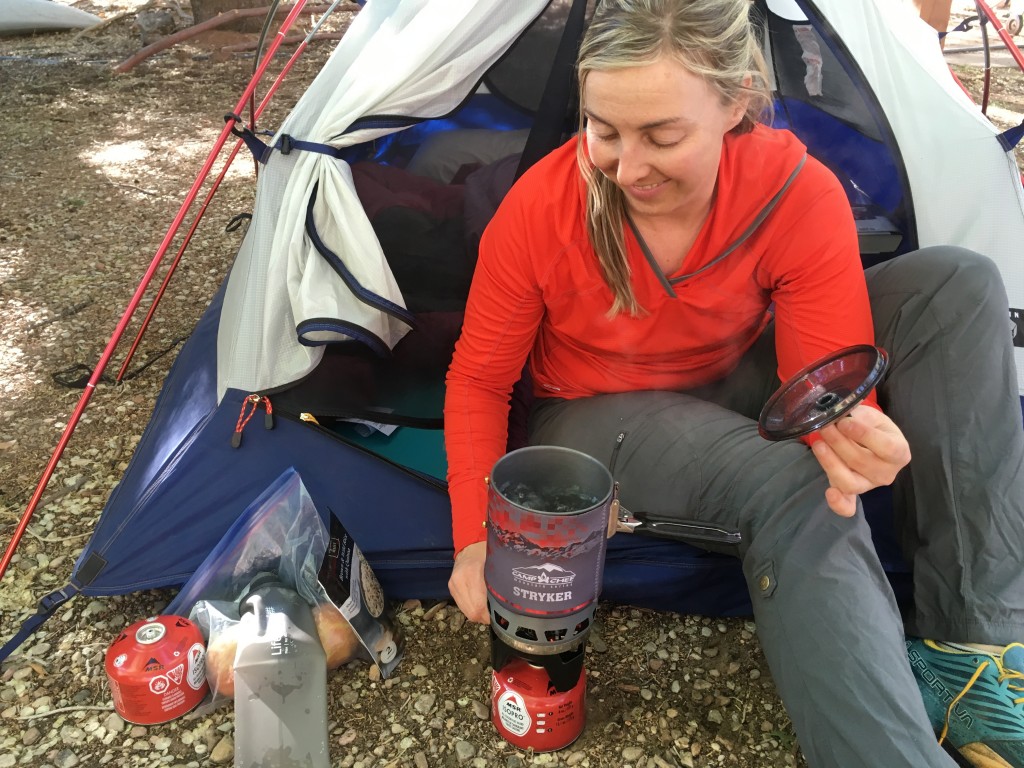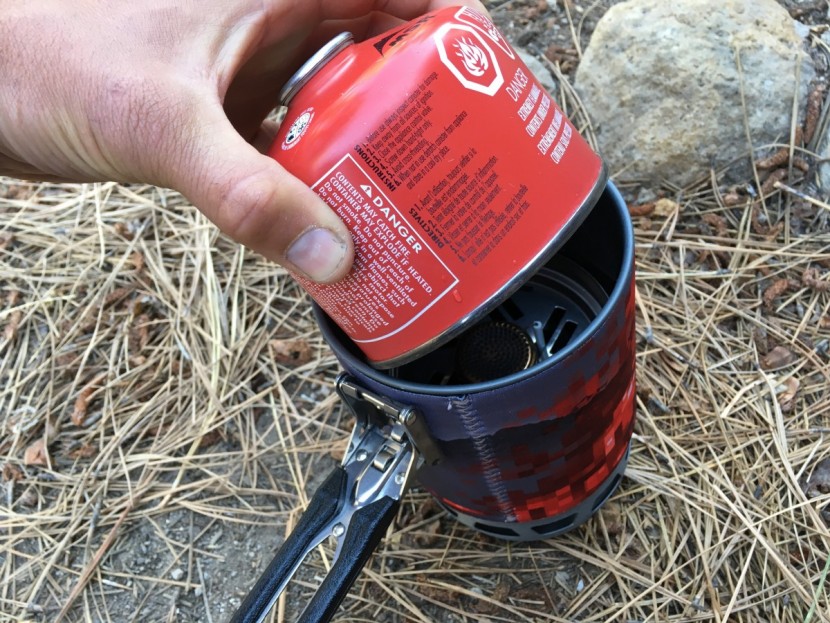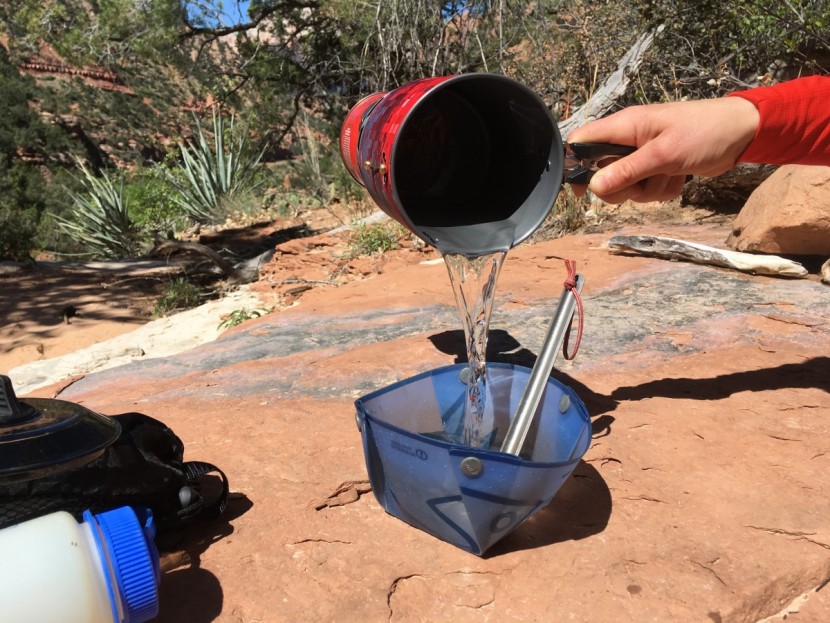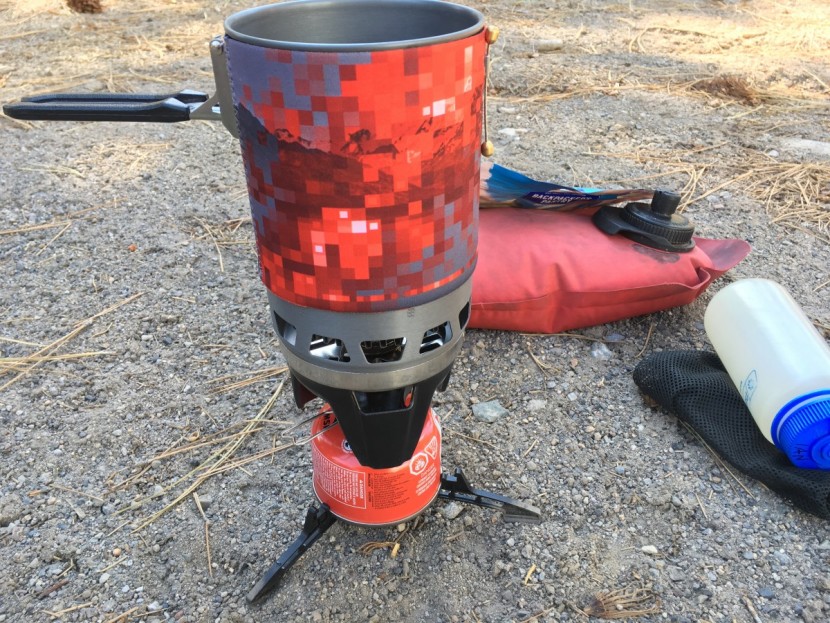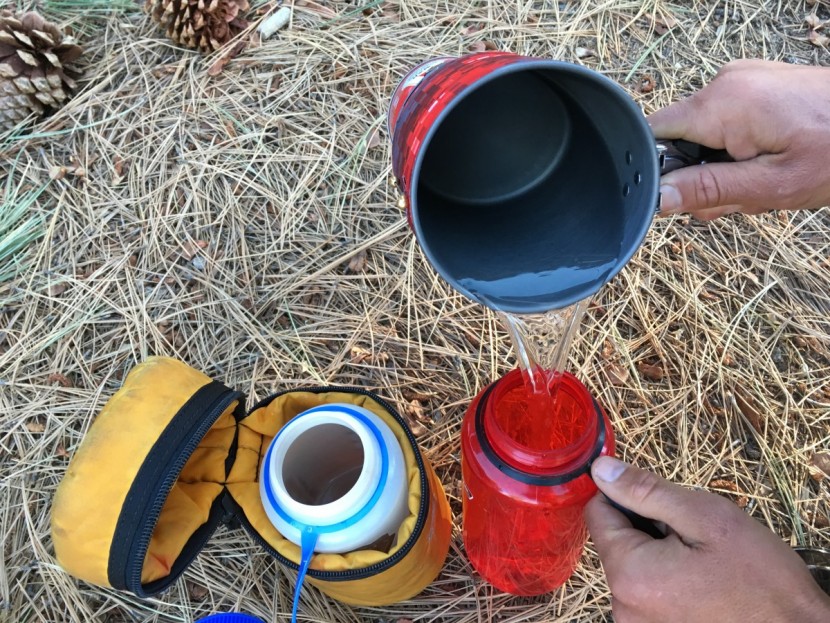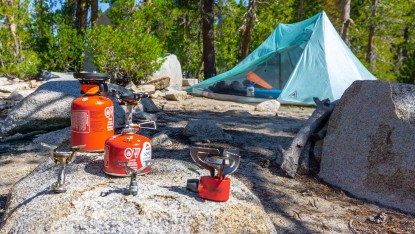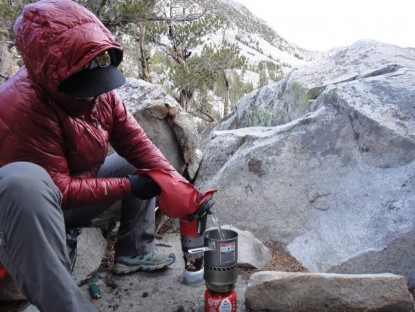Camp Chef Stryker Multi-Fuel Review

Our Verdict
Our Analysis and Test Results
Our testing team had low expectations when we pulled the Camp Chef Stryker 200 Multi-Fuel out of the box. However, it pleasantly surprised us in almost every way and is one of the better stoves in our review.
Fuel Efficiency
The Stryker is one of the more fuel-efficient stoves we've ever tested. In calm conditions, it only consumed 0.3 ounces of fuel while bringing a liter of water to boil. In our 2 - 4 mph fan test it sipped 0.6 ounces, at the back of the pack for integrated canister stoves but still ahead of many of the other models. Overall, an impressive performance in calm conditions and a good one in windy conditions.
Weight
The Stryker is by far the heaviest canister stove in our review at 18.5 ounces. It should be noted that this stove is only available with a 1.5 L pot (Camp Chef calls this a 1.3 L pot). The MSR and JetBoil brand integrated stoves in this review are tested with their 1 L pots. We feel confident that if these other stove systems were compared using their comparable pots, the weight difference would be less glaring, and, in some cases, the Stryker would come out on top.
Simmering Ability
Integrated canister stoves are built for speed and efficiency, and are generally not as good at simmering as other types of canister stoves. While the Stryker is not our top pick for making oatmeal or rice, we do think it is the best simmering integrated canister stove in our test.
Ease Of Use
This is possibly the easiest to use stove in our review. The large sturdy handle is a better version of the handle on the MSR Reactor. It locks into place securely and has a plastic coating that makes it easy to hang on to. Though the burner and pot mating system is the same concept found on most of the other integrated canister stoves, it's somehow more secure. We were able to confidently pour from this stove with the pot mostly full and the burner and an 8-ounce fuel can attached — not something we would attempt with many of the other stoves.
The piezo igniter on the Stryker is one of the best in our review as well. It lit the stove on the first try 95% of the time. Manufacturers love to boast about the speed of their integrated canister stoves, but there's nothing fast about hunting around for your lighter for 5 minutes.
Though we don't objectively measure sound output, anecdotally, our testers found the Stryker to be a bit louder than some of the other integrated canister models.
The propane bottle adapter lets campers use those widely available green propane bottles with the Stryker. While our testers often camp with a large top-rated camping stove, the adapter let us use the same fuel but fire up hot water for coffee quicker and with less fuss.
Boil Time
The Stryker didn't have a great score in this metric for integrated canister stoves. It boiled 1 liter of water in windless conditions in 5 minutes 38 seconds and in 7 minutes and 14 seconds in front of our 2 - 4 mph fan.
Value
We think this stove is a great value. Though it has risen in price over the years, it can sometimes be found for less online and performs just as well as other canister stoves in most metrics.
Conclusion
The Camp Chef Stryker 200 is an impressive stove. It does everything we want from an integrated canister stove and seems to be the first of it's kind with a highly reliable piezoelectric igniter. We really wish Camp Chef made a smaller version of this stove, but if you're thinking of buying a stove system with a pot larger than 1L, we think this one should be at the top of your list.
Other Versions
Camp Chef sells a version of this stove without the adapter or canister stand for the green propane bottles called the Stryker 100. In every other way, it's exactly the same stove, but it costs 40% less.


